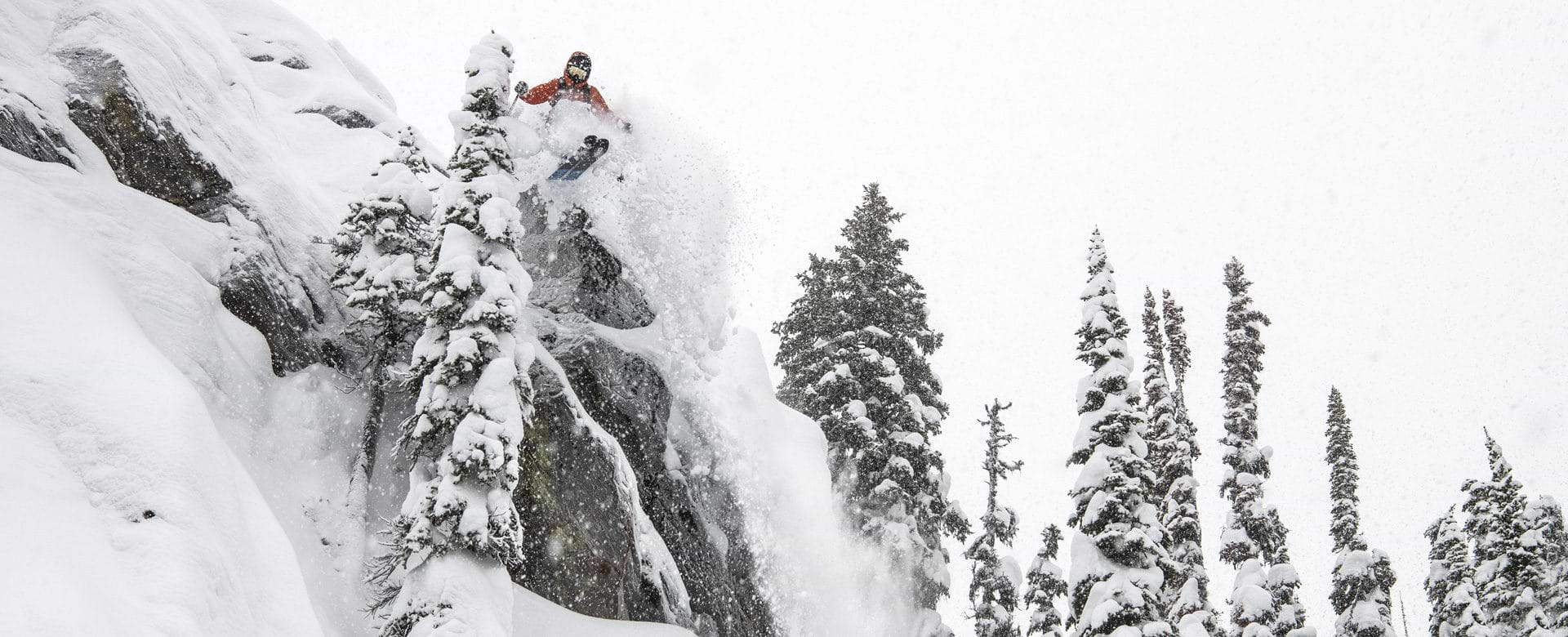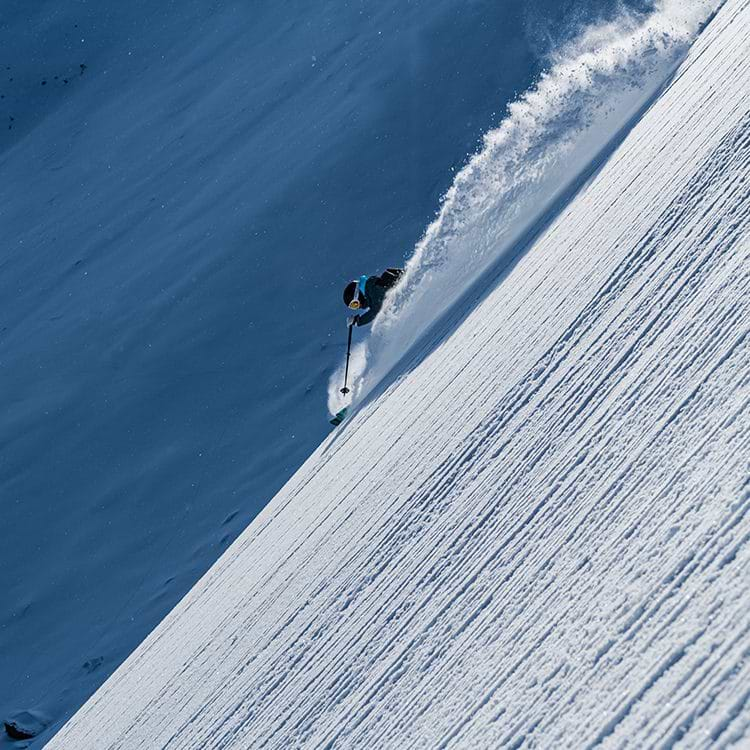Nestled along the shores of the Columbia River at the nexus of skiing’s most hallowed ranges, Revelstoke holds a special place in snowsports’ lore. Renowned for deep powder, perfectly spaced forests, and a towering alpine, there is a sheer abundance of skiable terrain in Revelstoke. From the resort’s massive vertical (1 710 metres/5 620 feet) – the largest in North America – to its boundless backcountry, Revelstoke can be the perfect blank canvas but intimidatingly expansive to newcomers. Accordingly, we crowdsourced the best local knowledge to maximize your trip to the Powder Highway’s crown jewel.
North Bowl & Kill the Banker
Kill the Banker — If it truly dumped, including on the lower mountain, there’s nothing quite so classic as smashing pillows down the gondola line. While the crowds surge toward the Stoke Chair, spin right around off the top of the gondola at Mackenzie Outpost and send the fall line back to the mid-station on RMR’s best-viewed test piece. Expect an abundance of cliffs, hidden glades off either side and cheering (or jeering) from the cabins above you.
Montana Bowl & Kokanee Bowl
Begbie Shoulder
Park at the base — a small, nondescript, sometimes plowed pull-off approximately ten kilometres past the Nordic Center on Highway 23S. This offers a couple of options: on-foot, a variety of convoluted uptracks that change each year wind through thick, sprawling new growth on Begbie’s lower cutblocks to avoid the monotony and distance of long switchbacking forest service roads. Once above the cutblocks, however, you’ll be rewarded with perfectly spaced old-growth cedar dripping in old man’s beard lichen. By sled (and Revelstoke may well be considered the powder sledding capital of the continent), forest service roads allow you to bypass all the lower bushwhacking.
The ridgetop sits at 1 994 meters, so it’s roughly a 1 400-meter day if you’re skiing car-to-car without a sled. Innumerable lines on varying terrain make Begbie Shoulder a classic in various conditions, from storm skiing to bluebird pow. While there’s an abundance of terrain, the parking lot is small, and parking is not allowed on the side of the highway, so arrive early on a pow day. Check Avalanche Canada’s daily bulletin before you go, and if you want to find the best lines, you can hire a local guide in town.
Seven Steps to Paradise
Though accessible via moderate skinning and occasionally a short bootpack up the final ridge, the ascent and descent are glaciated, so be prepared with the equipment and knowledge to navigate complex terrain. If you have doubts about the required skill set, hire a local guide.
The NNW glaciated slopes of Young’s often hold cold snow longer into the spring than the southern aspects across the highway. Combined with endlessly rolling consistent pitches (seven of them, as the name denotes), it’s one of the most famous lines in the Pass (along with the adjacent Forever Young Couloir, if you’re looking to add some spice to your day). If you’re not lucky enough to reserve a spot at the Asulkan Hut, expect to start early but still arrive after the first crews depart the Hut. Nevertheless, despite the descent's popularity, there’s ample room for fresh tracks. It’s not a classic because it’s exceptionally gnarly; it’s a classic because it’s that fun.
Note: Make sure to obtain the required pass for Glacier National Park and aWinter Permit— you must have both to ski in Rogers Pass.







































